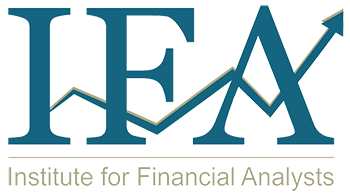FRM® Certification vs. CFA® Charter: Make an Informed Decision
Posted By: Kaplan Schweser
Updated: August 9, 2018
In the finance world, two common designations are the FRM® certification and CFA® charter. If you’re thinking about becoming a financial analyst or working with investments, these are two designations that could advance your career. So, what’s the difference, and which is right for you? Let’s take a look at FRM versus CFA.
What is the FRM® Designation and CFA® Charter?
FRM stands for Financial Risk Manager. Offered by Global Association of Risk Professionals (GARP), FRM certification sets you apart in the global marketplace and gives you a strong understanding of the underlying risk management concepts in today’s ever-changing financial markets. It also lets employers know that you take risk management seriously and that your knowledge has been validated by international professional standards.
Chartered Financial Analyst® (CFA) is the professional credential offered internationally by CFA Institute to investment and financial professionals. The program covers a broad range of topics relating to investment and portfolio management, financial analysis, stocks, bonds, and derivatives, and provides a generalist knowledge of other areas of finance. Industry professionals worldwide recognize the CFA charter as the “gold standard” of all financial analyst designations.
Similarities
Both designate professionals who are knowledgeable in finance and capable of analysis. For each, you must pass a set of exams, and you can’t move to the next level or part until you pass the first. The exams for each require a great deal of study, practice, and commitment to learning and analysis.
Note: It is possible to hold an FRM certification and CFA charter.
Differences
FRM certification is more specialized than the CFA charter. Its focus is managing exposure to operational, credit, market, foreign exchange, volatility, liquidity, inflation, business, legal, reputational, and sector risk. The CFA charter requires knowledge and expertise in a much broader range of financial analysis topics, such as portfolio management, economics, reporting, quantitative analysis, and more. Another difference is exam structure. There are two FRM exams (Part I and Part II), and there are three CFA Program exams (Level I, Level II, and Level III).
FRM® Certifcation and CFA® Charter Requirements
To earn your FRM certification, you need to:
- Take and pass the FRM exams. There are no degree or work requirements for taking the exams.
- Work full-time in a financial risk role for 2 years.
- Demonstrate your experience to GARP by describing your professional role in financial risk management and submitting it to GARP within 5 years of passing Part II.
To become a CFA charterholder, you need to:
- Have a bachelor’s degree (or equivalent) or be in the final year of your bachelor’s degree program. If you have 4 years of relevant work experience or a combination of professional work and university experience that totals 4 years, you are also eligible to start the CFA Program.
- Take and pass the Level I, Level II, and Level III CFA Program exams.
- Become a member of CFA Institute (which costs $275 and includes agreeing to abide by its code of ethics).
- Provide CFA Institute with proof that you’ve been working full-time for 2 years in a role that either involves investment decision-making or with a product that contributes to that process. This can include any work experience you had before passing the exam, as well as after.
Exam Topics, Formats, Fees, and Pass Rates
In a discussion about FRM certification versus CFA charter, people are most likely to be concerned about the exams. Here’s what you need to know.
The topics of the FRM exams are:
- Foundations of risk management
- Quantitative analysis
- Financial markets and products
- Valuation and risk models
- Market risk measurement and management
- Operational and integrated risk management
- Credit risk measurement and management
- Risk management and investment management
- Current issues in financial markets
Both Part I and Part II of the exam are offered in May and November. The format of both parts is multiple-choice. The cost ranges from $750 to $1050 for each part, based on when you register. Part of the registration is a $400 enrollment fee. Of those who took Part I and Part II between 2010–2017, the average pass rate for Part I was 46% and 57% for Part II.
The topics of the CFA Program exams are:
- Ethical and professional standards
- Quantitative methods
- Economics
- Financial reporting and analysis
- Corporate finance
- Equity valuation
- Alternative investments
- Fixed income
- Derivatives
- Portfolio management
Level I of the CFA Program exam is offered in June and December. Levels II and III are offered in June only. The format of the first two levels is multiple-choice. Level III has a written portion called constructed response and a multiple-choice portion. CFA exam fees range from $620 to $1,610, depending on your CFA exam level and whether you register early, during the standard registration period, or late. The pass rates for the CFA exam (as of December 2017) are as follows:
- Level I: 43%
- Level II: 47%
- Level III: 54%
Preparing for the Exams
Another similarity between the two designations is that all levels of both exams cannot be passed if all you do is last-minute cramming. So, whether it’s the FRM certifcation or CFA Program exam, you should start studying early.
To prepare for the FRM exams, plan to study a minimum of 200–240 hours for each part. The basic strategies you should follow while learning the FRM curriculum include being aware of the big picture and knowing the main concepts. FRM exam preparation classes for Part I and Part II are recommended, as is focused study. Take as many practice exams as you can. Save one for the last week before the exam.
To prepare for the CFA Program exams, CFA Institute advises a minimum of 300 hours of study for each level. You should focus on the Learning Outcome Statements (LOS) from CFA Institute because they detail exactly what you are expected to do on exam day. CFA exam preparation classes can really help, as will immersing yourself in practice questions. In addition, you should plan to take as many mock exams as you can to get used to the whole exam process.
FRM® Certification vs. CFA® Charter: How to Choose
Deciding which designation to pursue really depends on what you want to do as a financial analyst. FRMs typically hold managerial and executive-level positions that concentrate on risk and investment risk. So, if you’re interested in specializing in analyzing risk as a credit risk manager, market risk manager, regulatory risk manager, or operational risk manager, then the FRM designation is right for you. If you’re interested in becoming a portfolio manager, research analyst, consultant, risk manager, corporate financial analyst, financial adviser, or moving into the C-suite, then the CFA charter will be a better fit.
Of course, you don’t have to choose at all. As we mentioned near the beginning of this article, you can hold both designations. Today, risk, investment, portfolio management, and financial advising are more intertwined than ever. So, it makes sense for a CFA charterholder who wants to focus on risk management to earn the FRM designation. However, becoming a Certified FRM first has worked well for some risk analysts who wanted to broaden their overall expertise in finance concepts.
No matter which path you choose, there is a wealth of information out there that can help you earn the credential or credentials you need. You can get started here.

